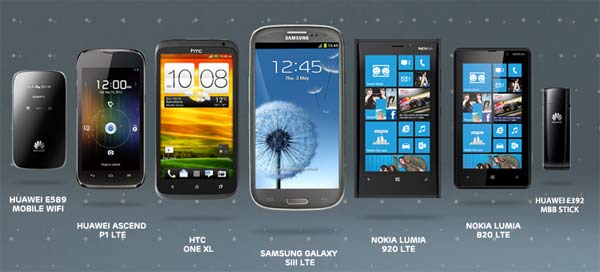UK welcomes new LTE brand; now rivals must step up
In the removal of 18 letters from its brand name, EE has catapulted the UK’s mobile operator community out of a Prisoner’s Dilemma, and is leading the country’s 4G charge.
September 11, 2012

In the removal of 18 letters from its brand name, EE has catapulted the UK’s mobile operator community out of a Prisoner’s Dilemma, and is leading the country’s 4G charge.
Out of the dust cloud raised by infighting between the UK mobile fraternity, EE has emerged with what looks like a 12 month head start in the LTE market. The company has clearly put the groundwork in to prepare its network for a 4G deployment that will see commercial LTE services available in 16 cities in the UK before Christmas.
With an investment of £1.5bn, EE has stepped up to the plate and made a greater commitment to LTE than its rivals, which according to Ovum analyst Matthew Howett, significantly weakens their protests.
“For a time there was a lot of cynicism and nobody really wanted to invest, instead they were just kicking it back to the courts to delay the point at which they had to put up money,” Howett said.
But it is now clear there was enough incentive for one operator to break away from the pack and invest and as a result to reap the rewards of the early mover advantage. But this also makes protests against EE’s move look overzealous as Howett believes Ofcom would green light deployment of LTE in the 900MHz band for other operators in much the same way as it has for EE in 1800MHz.
“There’s clearly an ecosystem available as well,” said Howett. “If you look at the five devices available: Samsung’s Galaxy S III, HTC’s One XL, the Huawei Ascend P1, and Nokia’s Lumia 820 and 920, at least two are available on LTE 900MHz too – the Galaxy SIII and Lumia 820.”
But what about the strong hint from EE CEO Olaf Swantee that there are more LTE1800 devices to be announced in the near future – something that strongly suggests Apple will support the frequency with its next iPhone, to be unveiled on Wednesday? Apparently this is something Ofcom considered before it gave EE clearance.
“Ofcom dedicated a whole annex in its recent report to what benefit O2 got from its exclusive iPhone deal and decided that it wasn’t that great and that the deal didn’t have a significant impact on the market,” said Howett. So it seems that the same argument would be true in this case, if EE had an LTE1800 iPhone 5 available in the UK.
Perhaps unsurprisingly it’s understood that the rest of the UK operators will not be taking any legal action, despite their strongly worded protests about Ofcom’s stimulation of the 4G market through EE’s concessions. In fact, with EE exclusively offering LTE and fibre under its own brand, the company has introduced another player into the market and set the stage for the removal of Orange and T-Mobile as brands once the migration of the customer base from 2G and 3G to 4G is completed in the distant future.
All operators will have a difficult job selling the benefits of 4G to consumers and businesses after the marketing disaster that was 3G, so EE’s decision to make its own brand the go to one of a ‘bigger, better and faster’ experience will distance LTE from previous technology generations.
According to Mark Newman, chief research officer at Informa Telecoms & Media, it’s a good time to be launching a new mobile brand in the UK, and while EE will, to all intents and purposes, be a new network, crucially it will be one which has excellent coverage to compete with the existing players.
“There will be some confusion about where the new brand sits alongside T-Mobile and Orange. But by introducing a dedicated new brand on its 4G network EE will be able to position itself as a premium service and, it hopes, migrate customers onto the new network. Over a period of time EE will come to be viewed as the service for heavy mobile internet users while T-Mobile will be the brand for cost-conscious prepaid customers and Orange, the brand associated with offers such as Orange Wednesdays,” said Newman.
Moreover, the use of the EE brand for fibre-to-the-home services is also interesting because it immediately positions Everything Everywhere as the provider of fixed broadband services with the largest retail footprint in the UK. “Over time we expect EE to develop services and capabilities that bring together its fixed and mobile businesses into single, integrated offerings,” Newman said.

lte-devices
The Initial Lte1800 Lineup
About the Author(s)
You May Also Like











_1.jpg?width=700&auto=webp&quality=80&disable=upscale)


.png?width=800&auto=webp&quality=80&disable=upscale)